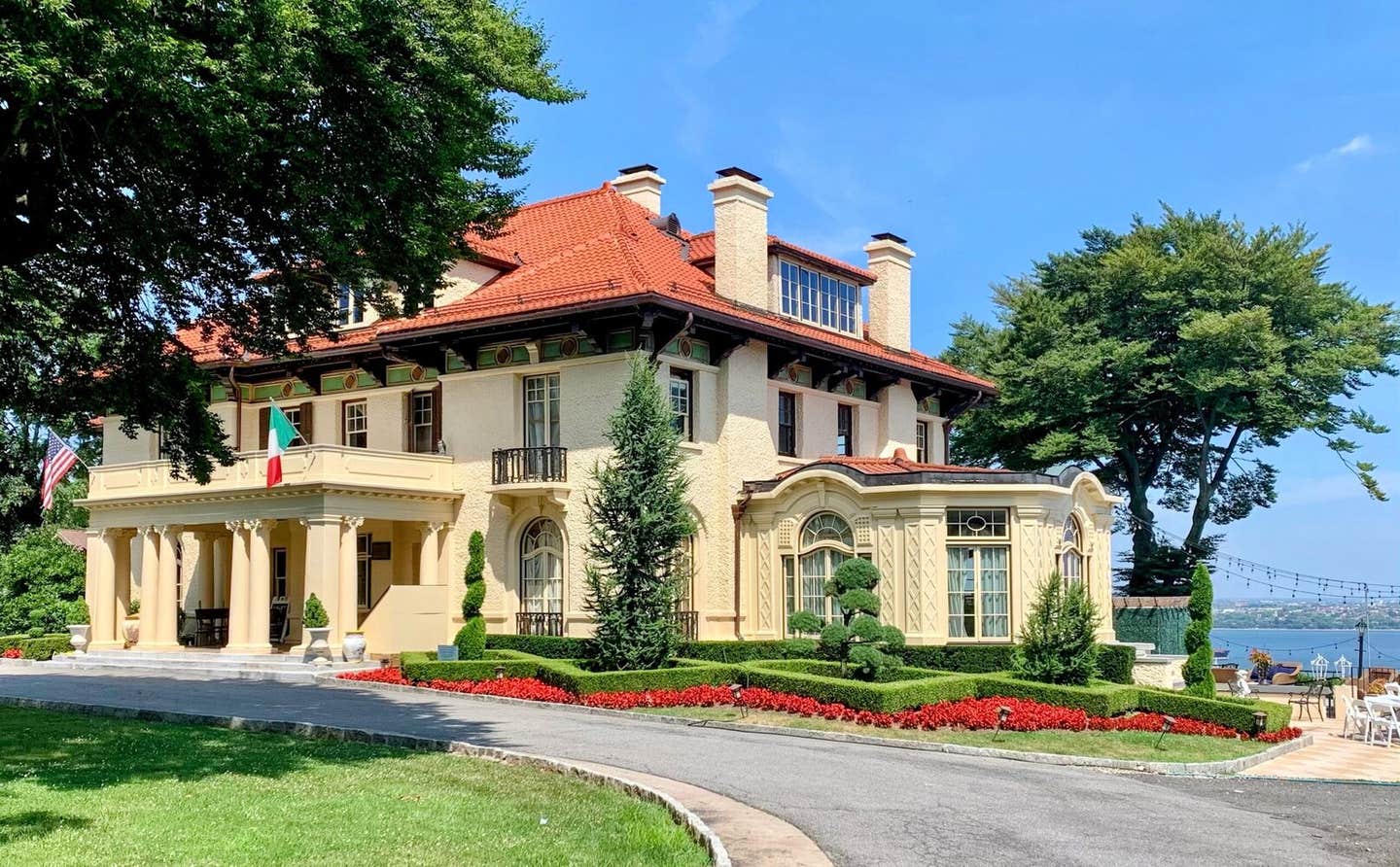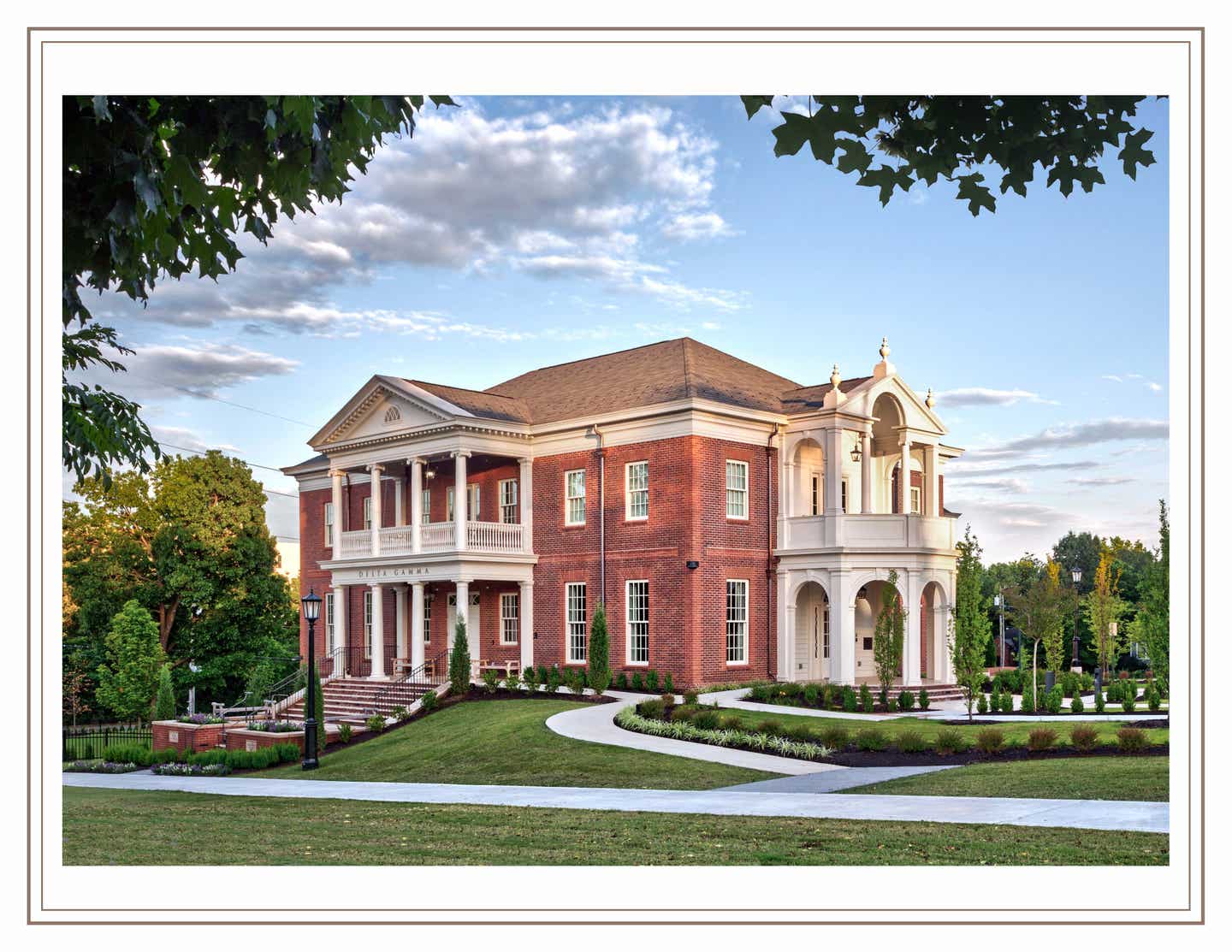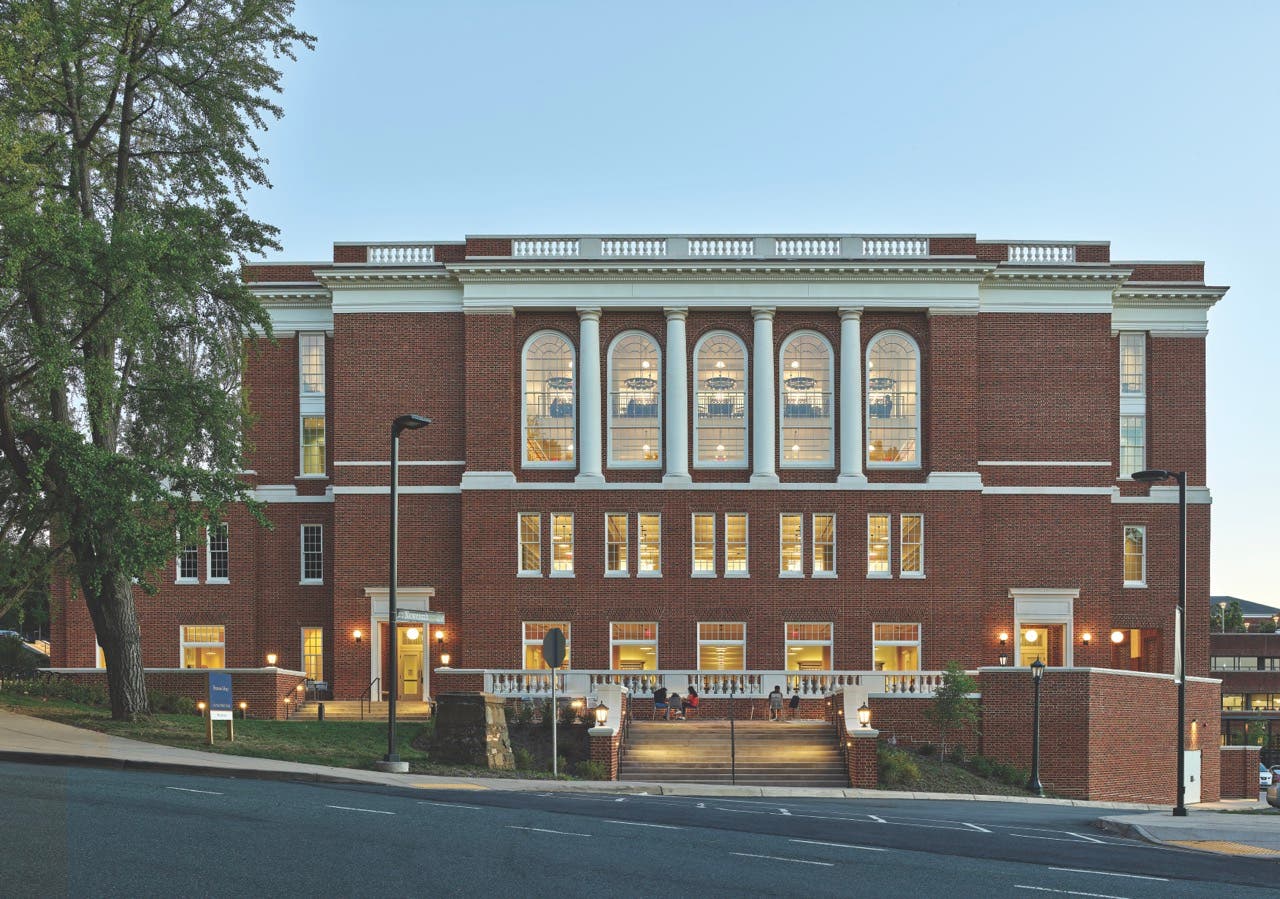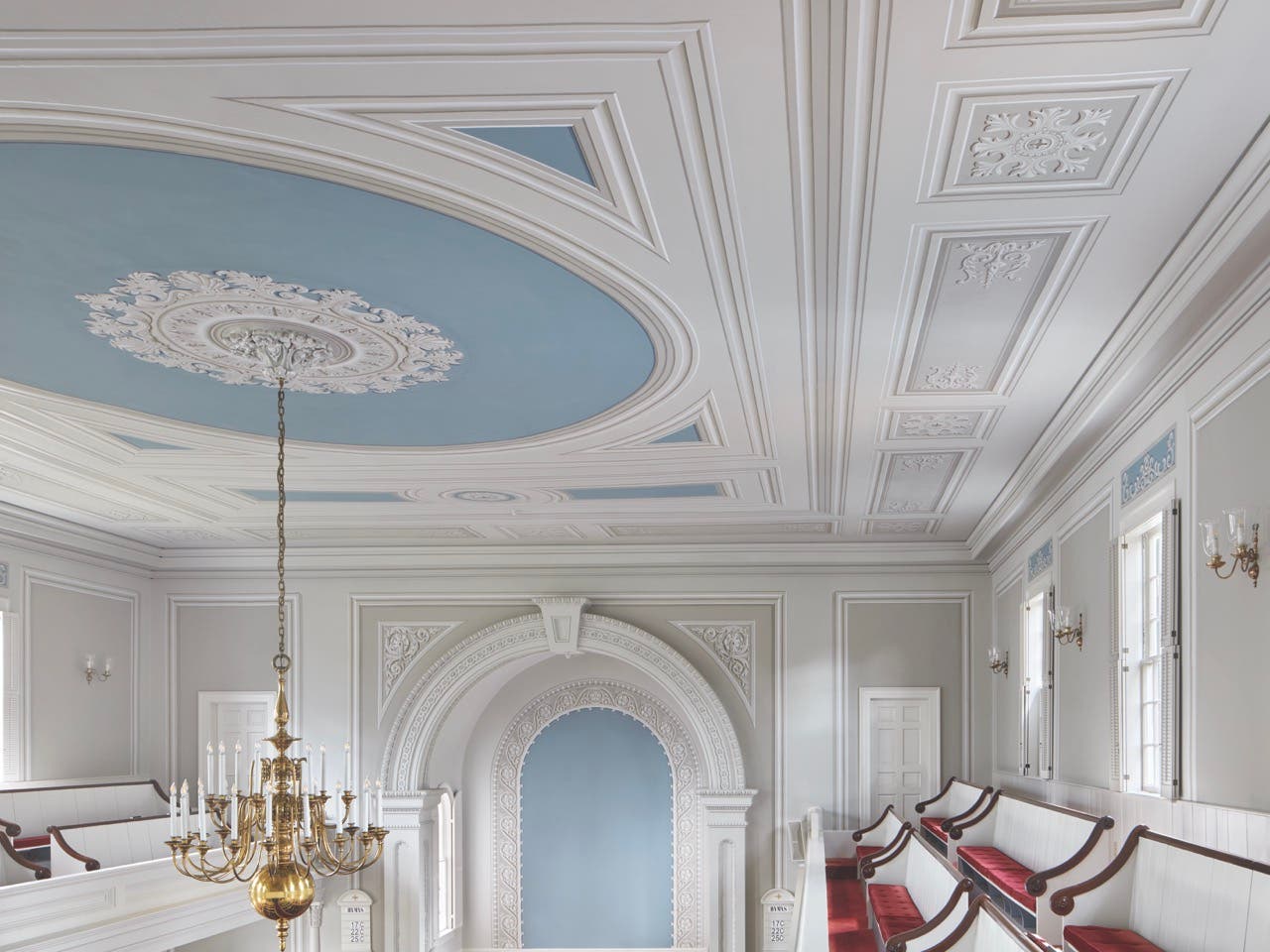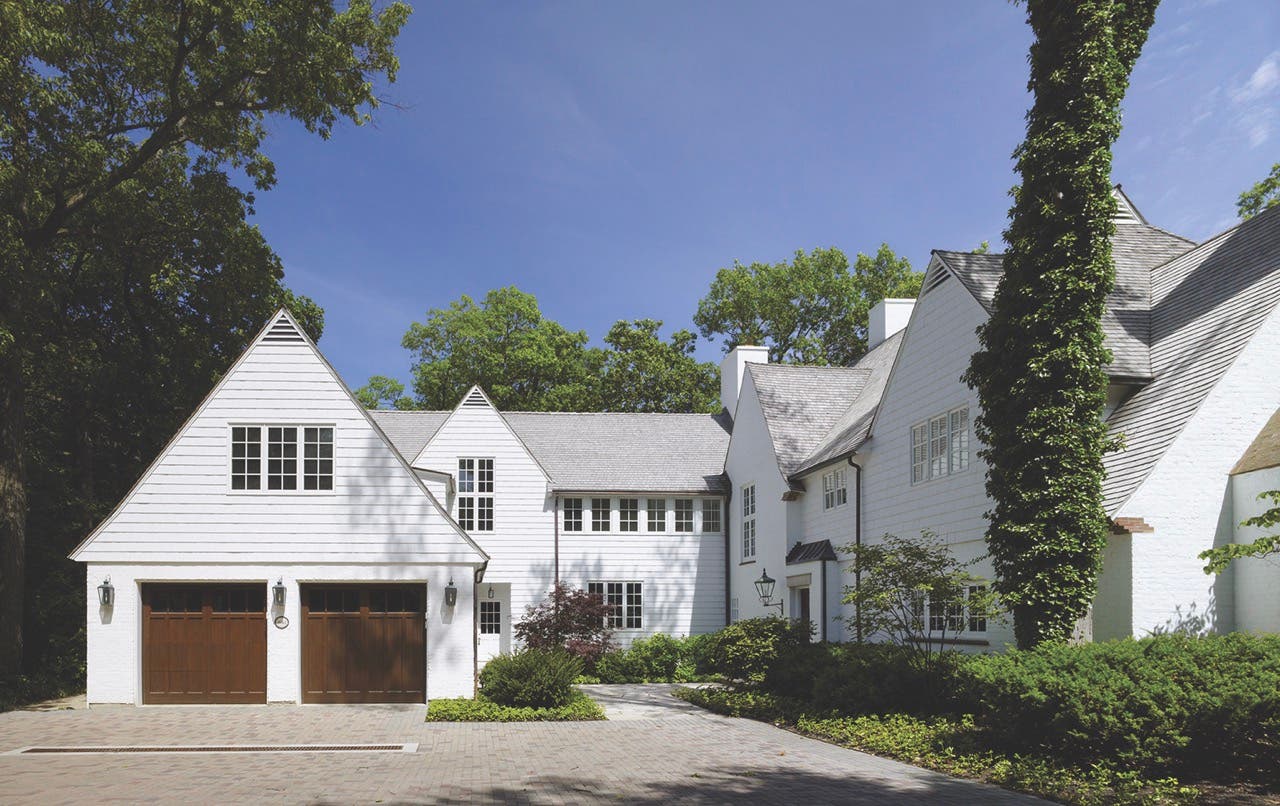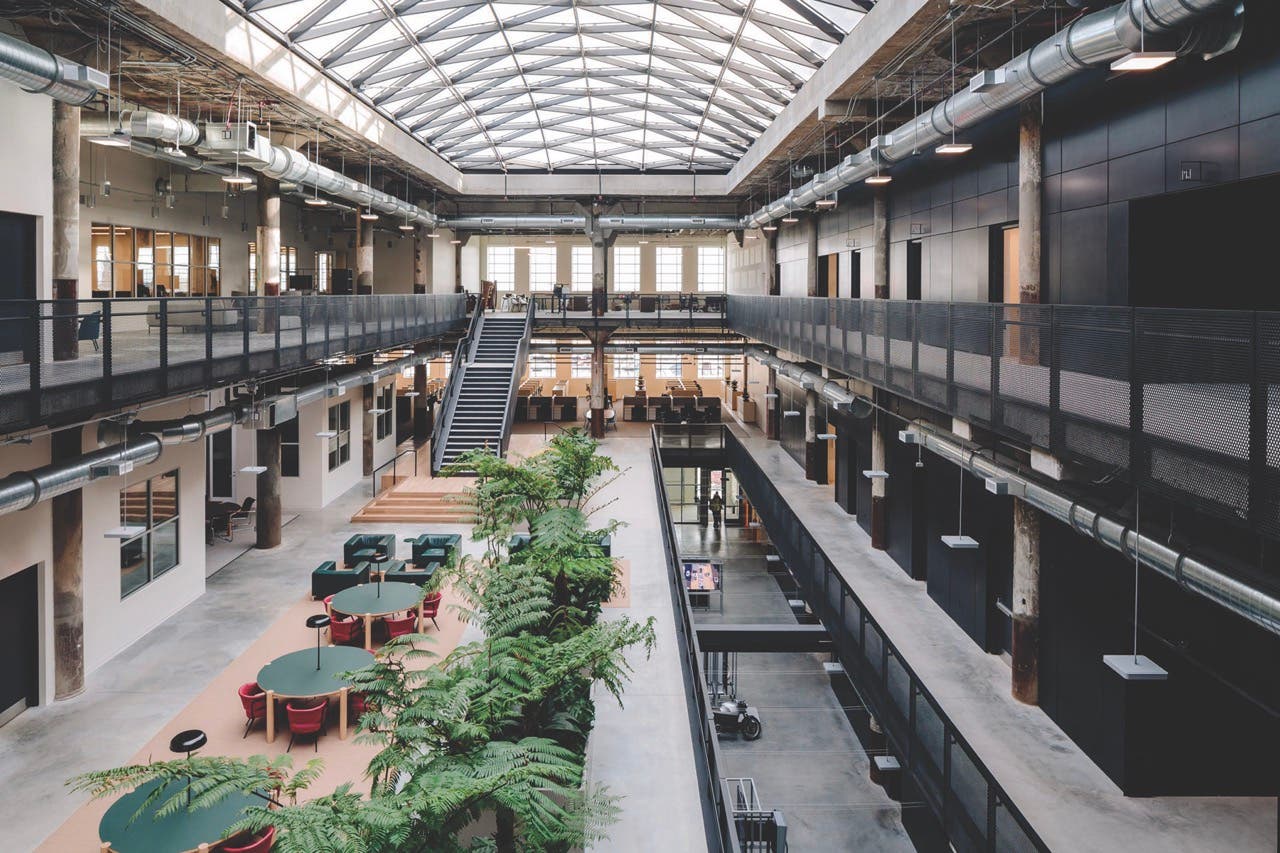
Public Buildings
Historical Redevelopment Driving Detroit’s Renaissance
The central atrium of
the Book Depository Building.
When representatives from Kraemer Design Group, a Detroit architecture firm, met a young real estate scout for the first time, the scout’s eyes went wide looking up at the city’s mix of Art Deco, Neoclassical, and Neo-Renaissance skyscrapers.
“Where did all this money come from?” the scout asked.
Brian Rebain, principal architect at KDG, couldn’t help but smile. The answer, of course, was: The automobile industry.
Detroit’s auto industry—and its population—have declined dramatically from a mid-century peak, to the point where some modern-day visitors are apparently unaware of the city’s history as a glamorous global powerhouse of industry. But the city itself has made a remarkable comeback over the past decade, fueled in large part by the redevelopment of buildings that date back to a time when Detroit was counted among the world’s wealthiest cities.
“These are absolute masterpieces, treasures,” Rebain says. “Every developer we work with is fascinated by the history of these buildings.”
Detroit’s future was uncertain when the city declared bankruptcy in 2013, marking the culmination of decades of population loss, economic decline, and urban decay. But in the interim, developers have taken advantage of historic preservation tax credits to bring long-abandoned buildings back from the brink, and in 2023 the city saw its first population uptick since the Eisenhower administration. The tax credits have not only driven the financing for many of these projects; they have also ensured that the city’s resurgence does not leave its storied history behind.
“I describe it as someone who’s been down on their luck and can’t afford nice clothes,” says Nancy Finegood, a Detroit native and former executive director of the Michigan Historic Preservation Network (MHPN). “Now someone came along and gave them an opportunity, and they took off their ragged shirt, and they’re showing their chest. That’s Detroit.”
‘Like Wildfire’
Photo by Stephanie Rhoades Hume/Michigan Central Station
Michigan Central Station, located in Detroit’s Corktown district, was the tallest train station in the world at 230 feet when it was completed in 1913. The building was designed by the same architecture firms that worked on New York’s Grand Central Terminal, and the Beaux-Arts Classical building served more than 4,000 travelers daily during the 1940s, as well as housing workers in the facility’s 18-story office tower. Ironically, however, the rise of car ownership and a decline in rail travel ultimately led to the demise of the Motor City landmark, which closed in 1988 and remained shuttered for nearly three decades.
“It just sat there,” recalls Mike Shields, founder and historical consultant of Kalamazoo-based BlackBerry Window & Door Systems. “Whenever anybody needed a story to illustrate Detroit and its failure, they’d show that building rotting away on the river.”
Today, Michigan Central Station instead stands as a symbol of a new era of investment. In 2018, Ford Motor Company embarked on a six-year, nearly $1 billion restoration project in collaboration with Quinn Evans Architects, and the building is now the centerpiece of a 30-acre innovation district featuring retail spaces, public parks, and art installations. The facility also serves as a key location for Ford’s electric and autonomous vehicle research and development efforts.
“The whole area is exploding, from that one building,” Shields says. “It’s spreading like wildfire.” Around one and a half miles to the east, in downtown Detroit, the 38-story Book Tower building sat largely vacant for four decades before it was bought in 2015 by Bedrock Detroit. The development firm, founded by billionaire Detroit native Dan Gilbert, has spearheaded redevelopment of the city’s downtown, redeveloping dozens of historic buildings since 2011.
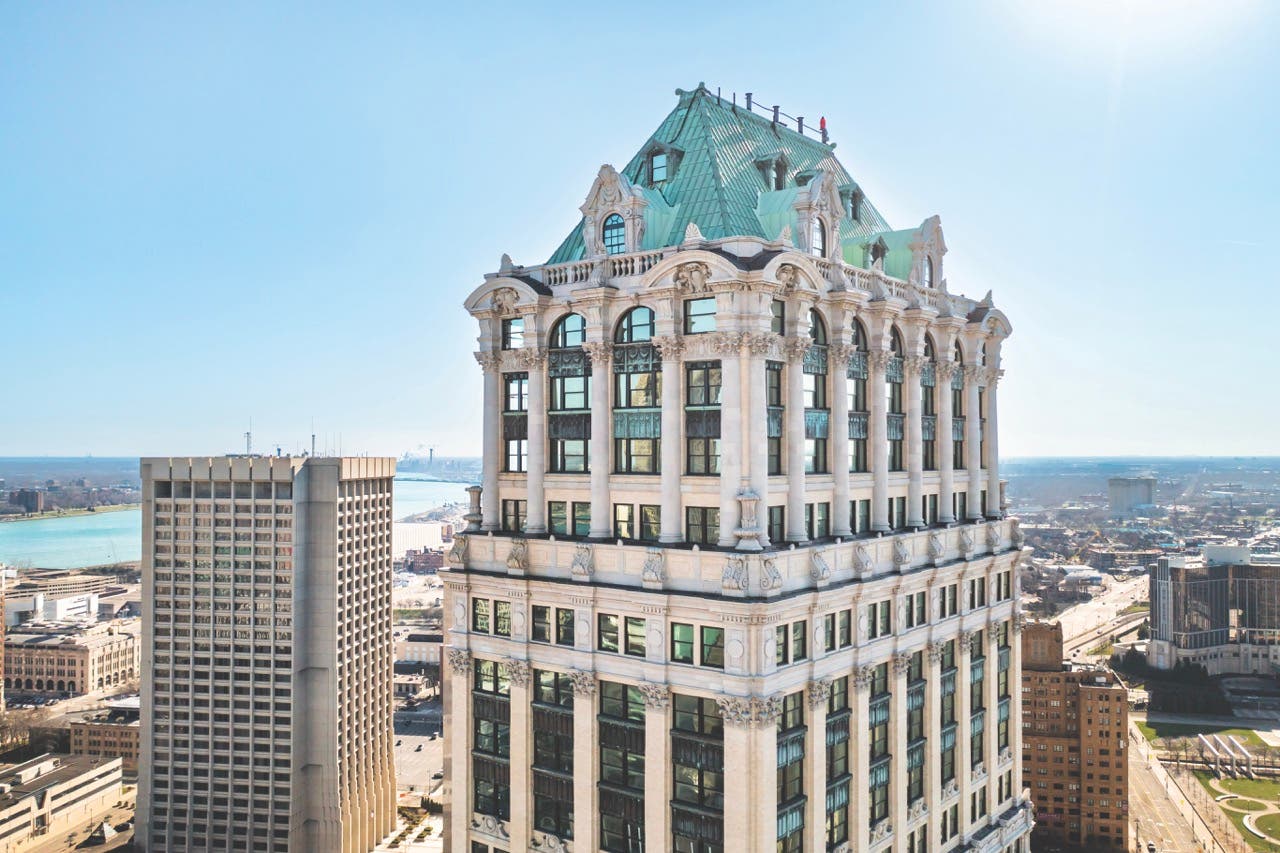
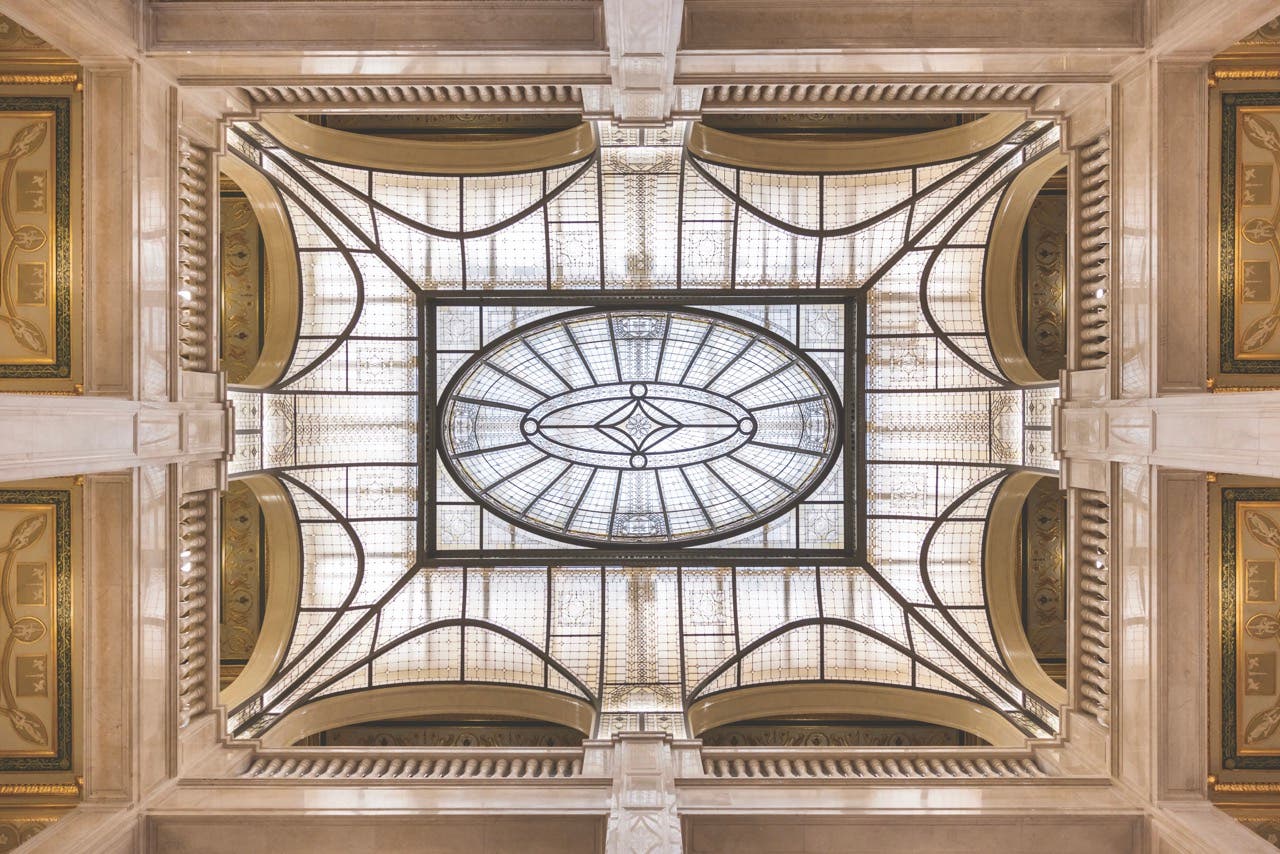
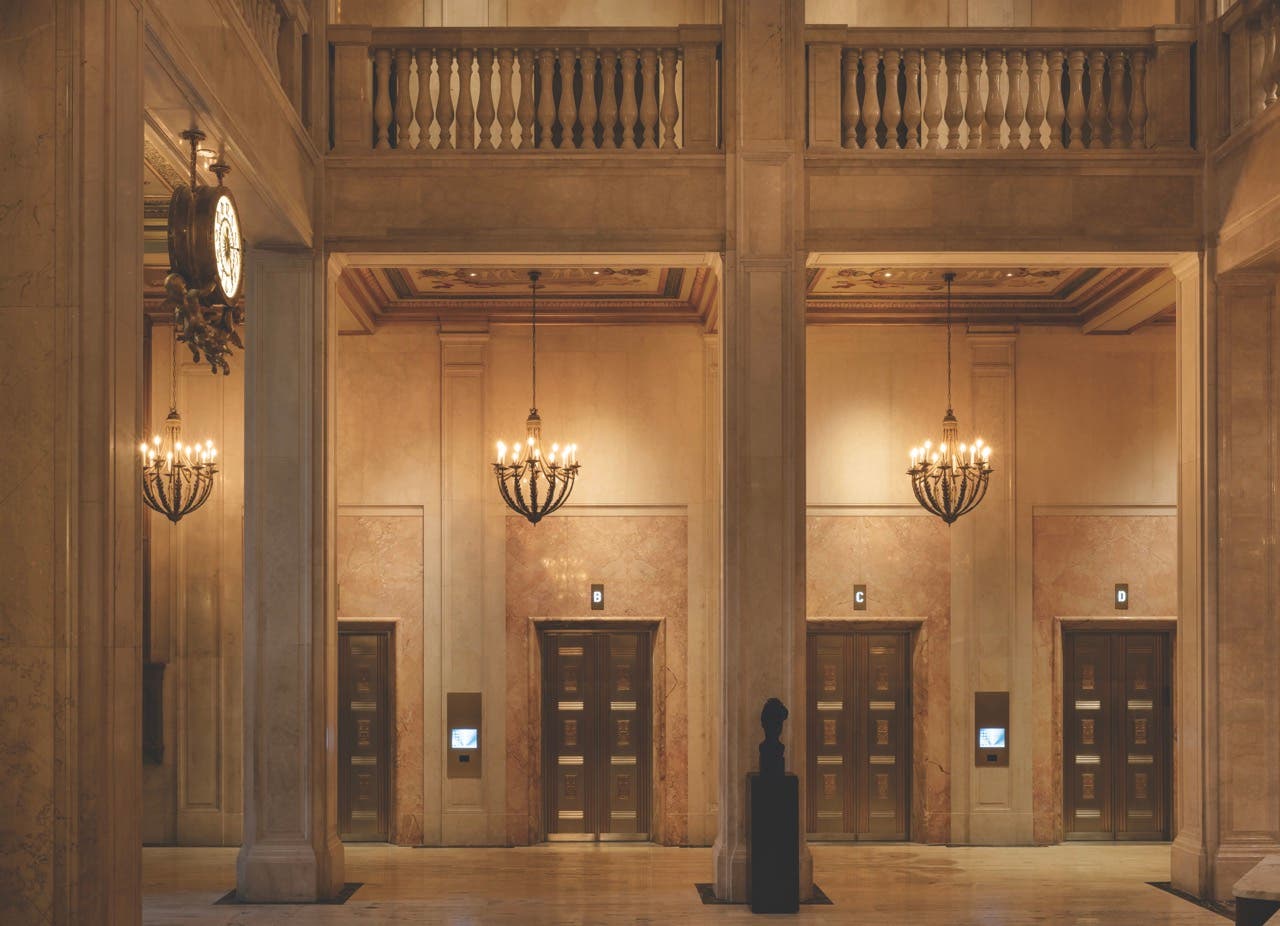
Shields’s firm performed the historic replication of 2,400 windows at the Book Tower site, and he says that walking into the building for the first time was like stepping into the past. “People literally walked out 40 years ago, and it was like they’d just left their desks,” he says. “All their papers were still there.” Today, Book Tower is a mixed-use space housing a luxury hotel, apartments, office space, restaurants, and retail.
Rebain’s firm worked on both Book Tower and the redevelopment of the Shinola Hotel block, an ambitious Bedrock project that opened in early 2019. What was once a collection of mostly vacant buildings—including an energy plant, a puppet theater, and a liquor store—has been transformed into a bustling hotel and retail complex.
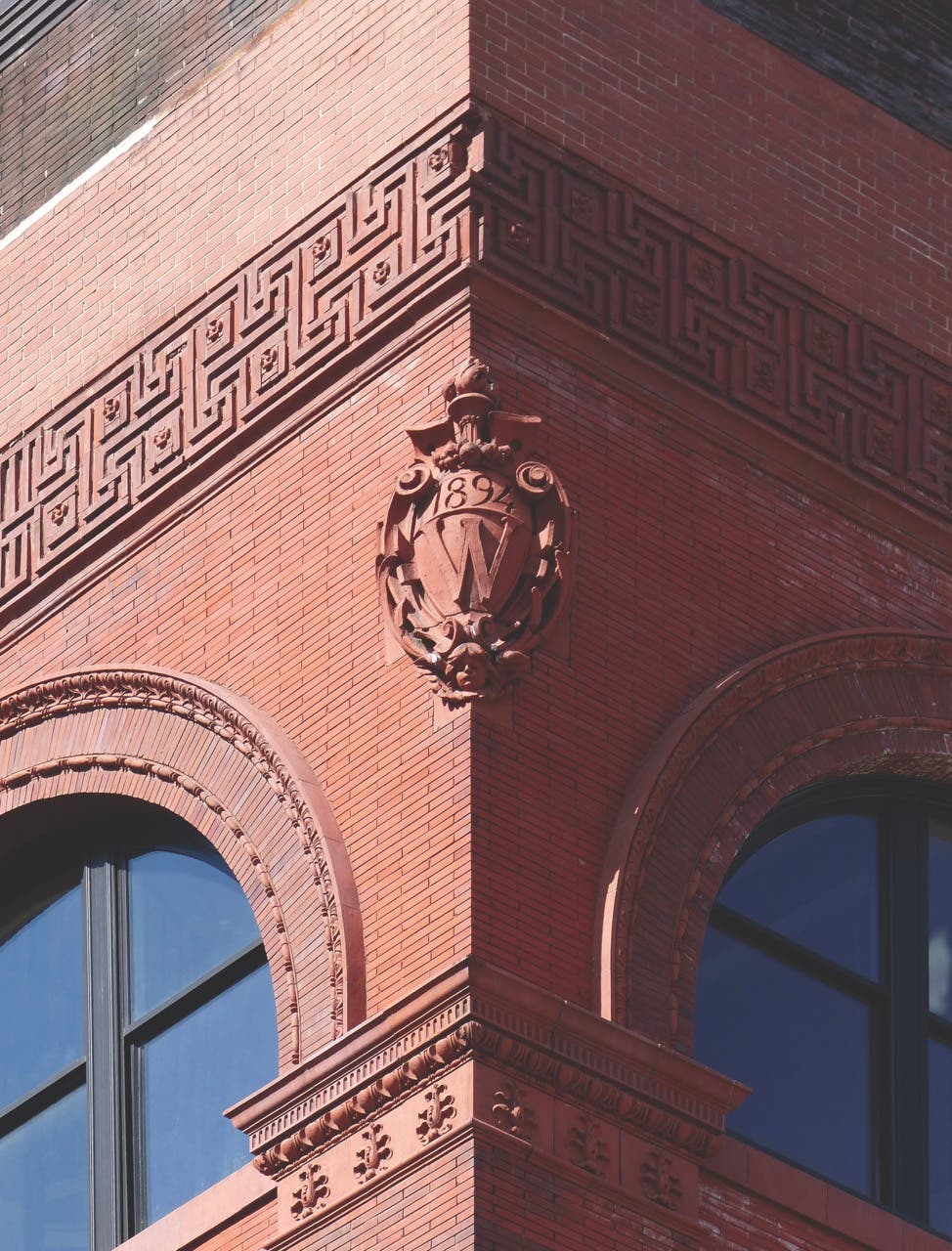
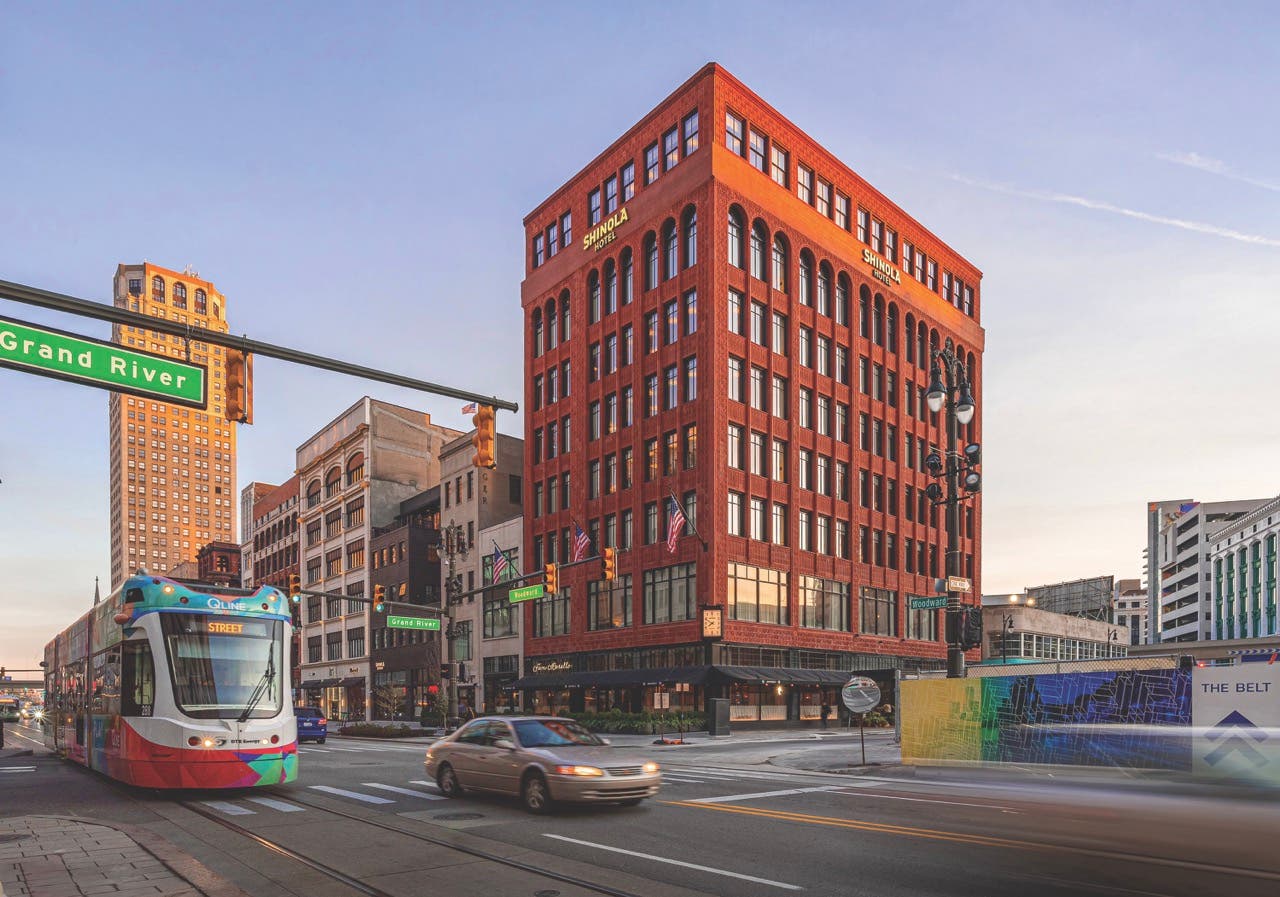
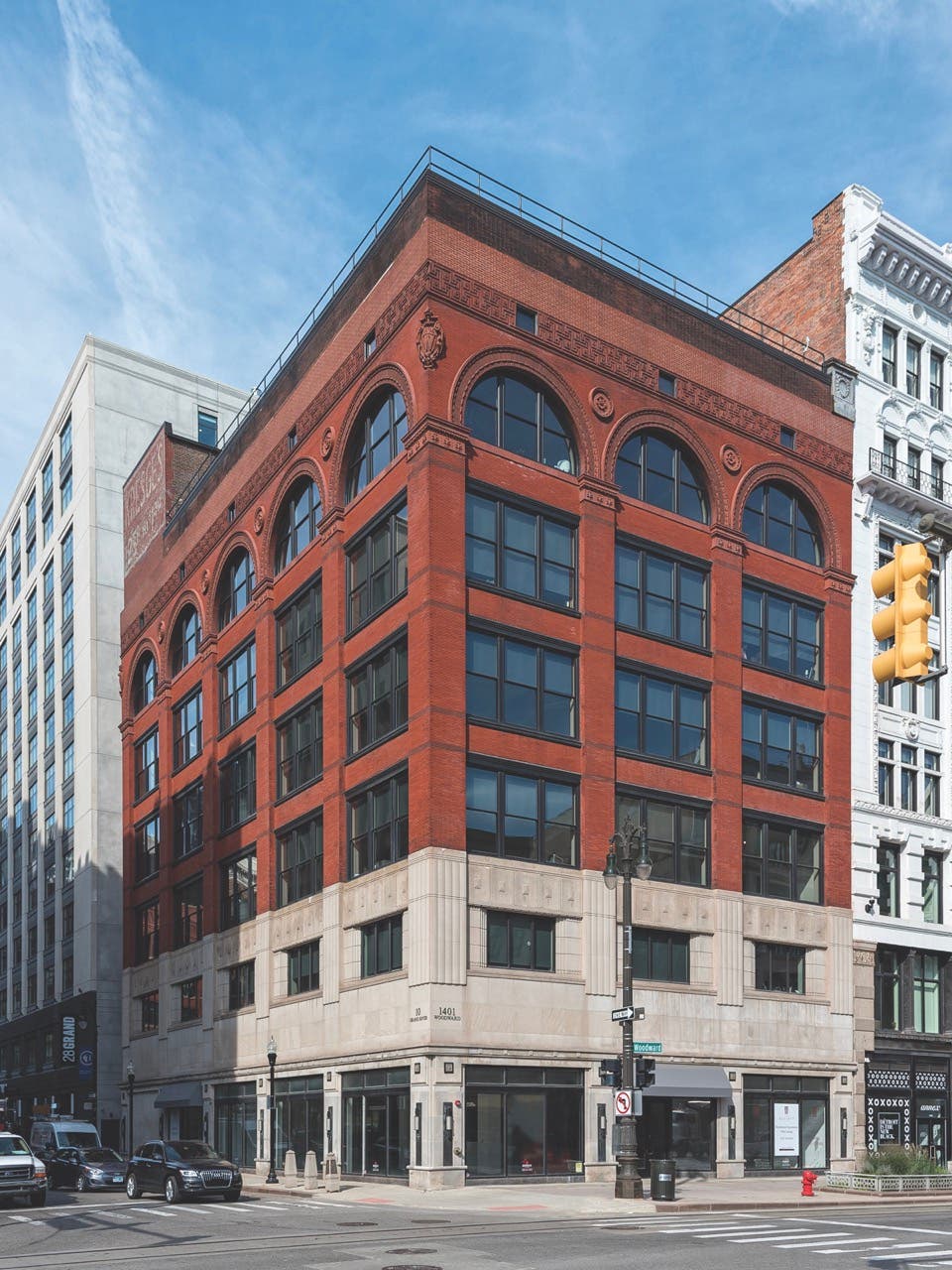
KDG exterior and the Shinola Hotel exterior. Photos by Kraemer Design Group.
“That project, in addition to renovating two historic buildings and creating this great hotel, built a new core in downtown,” Rebain says. “That was a big moment that felt like a culmination of so much of the work that had been happening over time.”
Progress Across the City
While the city center has seen the most dramatic transformation, revitalization efforts are also spreading to surrounding neighborhoods like the Boston-Edison Historic District and Indian Village.
“There is so much inventory of other buildings—low-rise and mid-rise buildings, as you go out—because the footprint of the city is huge,” says Shields. “We’re doing some projects now on a smaller scale, but just as exciting. One of these gets done, and next thing you know, there’s immediate activity around it: a store, a coffee shop, a law office.”
Finegood points to the impact of a 10-week hands-on home repair academy that MHPN offered nearly a decade ago for residents in areas like Detroit’s North End. “That sparked so much activity,” she says. “We were afraid to walk into some of these houses, because the floors would collapse. But now, the developers have invested, and the homes are being rehabbed.”
“I’ve been seeing a lot of smaller developments popping up,” Rebain says. “I’m seeing multifamily housing, and smaller adaptive reuse projects, and people just buying a house and fixing it up. So it’s not all top-down from big developers. It’s spreading—in a very grassroots way—into the neighborhoods.” TB




